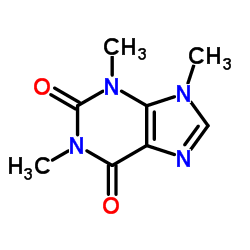| Structure | Name/CAS No. | Articles |
|---|---|---|
 |
Isocaffeine
CAS:519-32-4 |
| Structure | Name/CAS No. | Articles |
|---|---|---|
 |
Isocaffeine
CAS:519-32-4 |